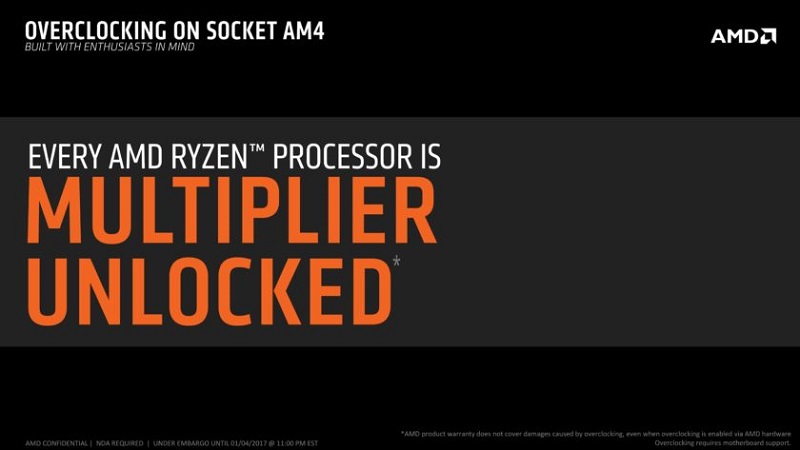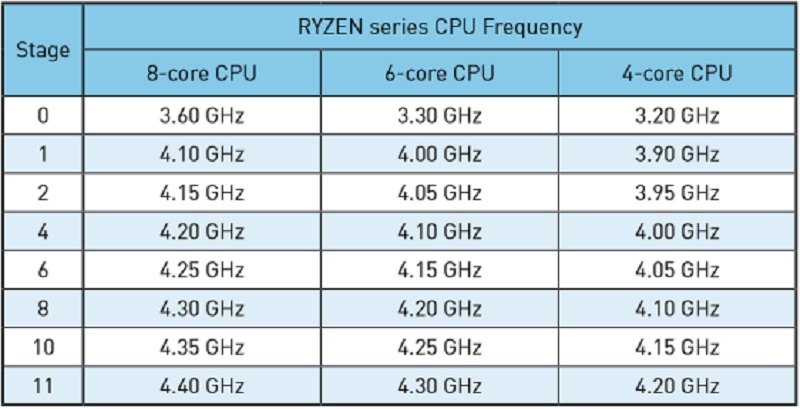MSI Expects About 4.4 GHz OC Out of Ryzen
Samuel Wan / 8 years ago

Over the past while, motherboard partners have been adding automatic one click overclocking solutions to their motherboards. After making their debut on Intel based platforms, Ryzen is getting in on the action as well. For some MSI X370 AM4 motherboards, Game Boost is the auto-OC solution. A surprising goodie has now popped up concerning expected Ryzen overclocking courtesy of MSI documentation.
From MSI’s Game Boost manual, there is a full table for the maximum Game Boost overclock for all the different Ryzen variants from 8 cores down to 4 cores. MSI comes up with these numbers through a lot of internal testing and collaboration with AMD to determine what frequencies most Ryzen CPUs can reach. There are also likely tuning for the specific CPU by reading the stock voltage and batch numbers but the table should be the minimum most Ryzen CPUs should reach.

Moving up the 11 stages in total, the 8 core variants are allowed to go up to a maximum of 4.4 GHz. The 6 cores come in a bit slower at 4.3 GHz while the 4 core models are allowed the least headroom at 4.2 GHz. It’s unknown if the clock speeds are limited due to the differences in binning or because AMD/MSI want to hold back the cheaper models. One reason as mentioned for the differentiation is due to binning, with the 8 core variants having the strictest tolerances while more imperfect 4 core variants are accepted for retail. Another reason is that despite the use of 4 core CCX design, the 6 core and 4 core models are merely defective 8 cores rather than different dies altogether.
Compared to the Intel Game Boost clock speeds, AMD’s are somewhat lower by as much as 400 MHz for the octa-core variants. Intel’s situation is also different in that the higher core count models feature lower counts., This matches the general consensus that having more cores limits overclocks as there is more variation due to the higher core count as not every core may be golden. Once we get our hands on the full Ryzen CPUs, it will be interesting to see what their limits are, how well they scale and the differences between the R7, R5, and R3.



















